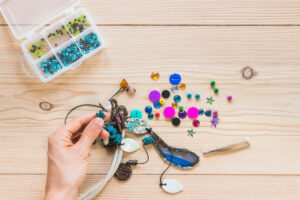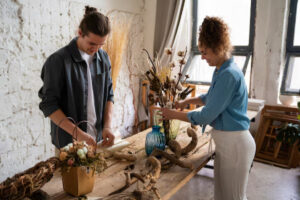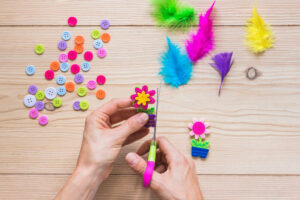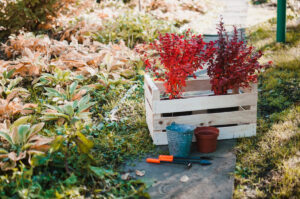The DIY & Crafts Blog
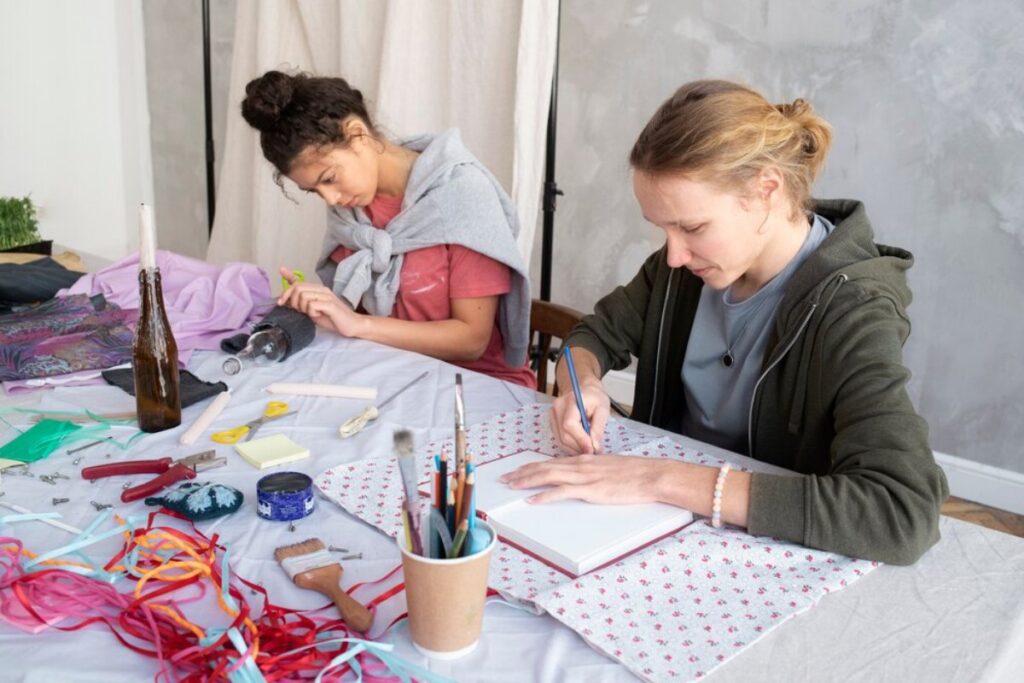
Craft Fair Success Tips for Upcycled Creations
Upcycling is one of the hottest eco-friendly trends in this line, transforming garbage into something valuable. Craft fairs (particularly in the UK) are a perfect setting for craftspeople to showcase their upcycled goods to an audience. Craft fairs are also a good opportunity for experienced crafters and beginners to profit from doing something they already enjoy.
This post shares ideas and suggestions on making craft fairs successful for you with your upcycled goods. These will include product development, booth design, pricing, and marketing. Ultimately, you will know how to turn your upcycled crafts into a profitable business at local events.
Why Upcycled Crafts Are Perfect for Craft Fairs
Craft fairs attract customers who appreciate originality, sustainability, and unique products. Here’s why upcycled crafts fit perfectly into this scene:
Emphasising Sustainability and Eco-consciousness
More people care about the environment today. Many consumers prefer sustainable options over mass-produced items. Upcycled crafts tell a story of creativity and resourcefulness while giving new life to discarded materials.

Providing Unique and Exclusive Products
In a society of mass production, upcycled items are a sharp contrast. Each piece has its own character due to the materials employed and a more artistic process. This uniqueness draws attention when you sell at competitive craft fairs, where shoppers want something special.
Tapping into the Growing Interest in DIY and Handmade Goods
Craft fairs celebrate handmade artistry, making them ideal for upcycled products. Shoppers look for items with a personal touch, whether furniture, jewellery, or decor. Upcycled goods are considered high-quality, well-crafted, and thoughtfully made, appealing to those who prefer handmade over factory-made items.
Preparing for a Craft Fair: What You Need to Know
Proper preparation is crucial before entering a craft fair. Knowing your audience, choosing the right products, and setting up your stall are essential for success.
Choosing the Right Craft Fair
Many craft fairs exist, from small local markets to significant events. Research which fairs suit your products best. Consider these factors:
- Target Audience: Does the fair attract eco-conscious shoppers? If your items promote sustainable living, consider events focusing on green products.
- Size and Scope: Smaller fairs allow direct customer interaction, while more significant events draw bigger crowds but need more investment.
- Location: Select a fair in an area that matches your brand’s values and customer base. Urban locations often attract shoppers looking for trendy, eco-friendly products.

Selecting the Right Upcycled Products to Sell
Choose products that showcase your skills and appeal to the audience. Here are some ideas:
- Upcycled Jewelry: Items like earrings made from vintage buttons or necklaces from old coins are popular at craft fairs.
- Furniture: Small items like tables and chairs can be turned into functional pieces. Customers love items with both a story and purpose.
- Home Decor: Upcycled frames, mirrors, vases, or lampshades grab attention. Custom decor often attracts buyers seeking statement pieces.
- Fashion Accessories: Scarves, bags, and hats from repurposed materials are highly sought after, especially if they blend style with sustainability.
Think about size, price, and portability. Small, affordable items often encourage impulse buys, while larger pieces appeal to those seeking standout items.
Setting Up a Winning Stall: Presentation and Layout
Your craft fair booth is your storefront, so make a lasting impression. A well-planned display can lead to more sales.
Eye-catching Displays
Create a welcoming and attractive display for your upcycled items. Here are some tips:
- Theme and Consistency: Pick a colour scheme or theme that matches your products (e.g., earthy tones for nature-inspired items).
- Use Vertical Space: Use shelves and stands to display items at various heights. This adds visual interest and makes your booth feel fuller.
- Lighting: Good lighting showcases your products and sets an inviting mood. Use LED or natural light to highlight your crafts.
Clear and Creative Labeling
Label your items clearly with prices and information about the materials. Customers are drawn to products with interesting stories. Consider adding tags that explain how each item was upcycled. This highlights your creativity and educates buyers about the benefits of upcycling.
Creating an Interactive Experience
Engage with customers by explaining your process or offering live demos. Let them touch and feel the materials, or host a small hands-on workshop. An interactive element can attract crowds, boost engagement, and create word-of-mouth buzz.

Pricing Strategies for Upcycled Crafts
Pricing can be tricky at craft fairs. You want to reflect the time and creativity you put into your items while staying competitive.
Understand Your Costs
Calculate your costs for materials, time, and craft fair fees (like booth rental and transport). This gives you a baseline price.
Research Similar Products
Check how similar upcycled items are priced at craft fairs. While you shouldn’t undersell yourself, staying competitive is key, especially when starting. Compare prices of similar handmade or eco-friendly products to align with the market.
Price for Profit, Not Just to Cover Costs
Covering costs is essential, but aim to make a profit. Add a margin that supports business growth. Many crafters recommend marking up by at least 2-3 times the cost of materials and labour.
Marketing Your Upcycled Creations at Craft Fairs
Effective marketing is crucial before, during, and after the fair to attract customers and build your reputation.
Pre-event Promotion
Start promoting your presence before the event. Use social media to let people know you’ll be at the fair. Share sneak peeks of your creations, behind-the-scenes looks, and special offers like discounts for the first 20 buyers.
Engage with Customers During the Event
At the fair, engage with every customer who visits your booth. Be friendly and knowledgeable about your upcycled crafts. Share the story behind your work and explain the benefits of upcycling.
Post-event Follow-up
After the event, stay connected with customers who bought from you. Gather email addresses for updates on future events, new product launches, or special promotions. A mailing list can help convert one-time buyers into repeat customers.
Transforming Your Upcycled Creations into a Thriving Craft Fair Business
How to Make Money Selling Upcycled Crafts at Fairs: Upcycling is an amazing way to create one-of-a-kind treasures, and you can turn your passion into a business by selling them at fairs. With the proper selection of events, attractive items for sale, and an emphasis on how you set each of those up, what you charge for them, and how you advertise them, you can carve out an excellent niche in the craft fair circuit.
Keep in mind that you are called to win by continuing to make connections with customers and pursuing your inspiration. Upcycled products can also be sold at craft fairs, where eco-friendly consumers will be searching for your creations.
Are you prepared to showcase your upcycled creations? Start preparing for your next craft fair and let your unique, sustainable products shine.



